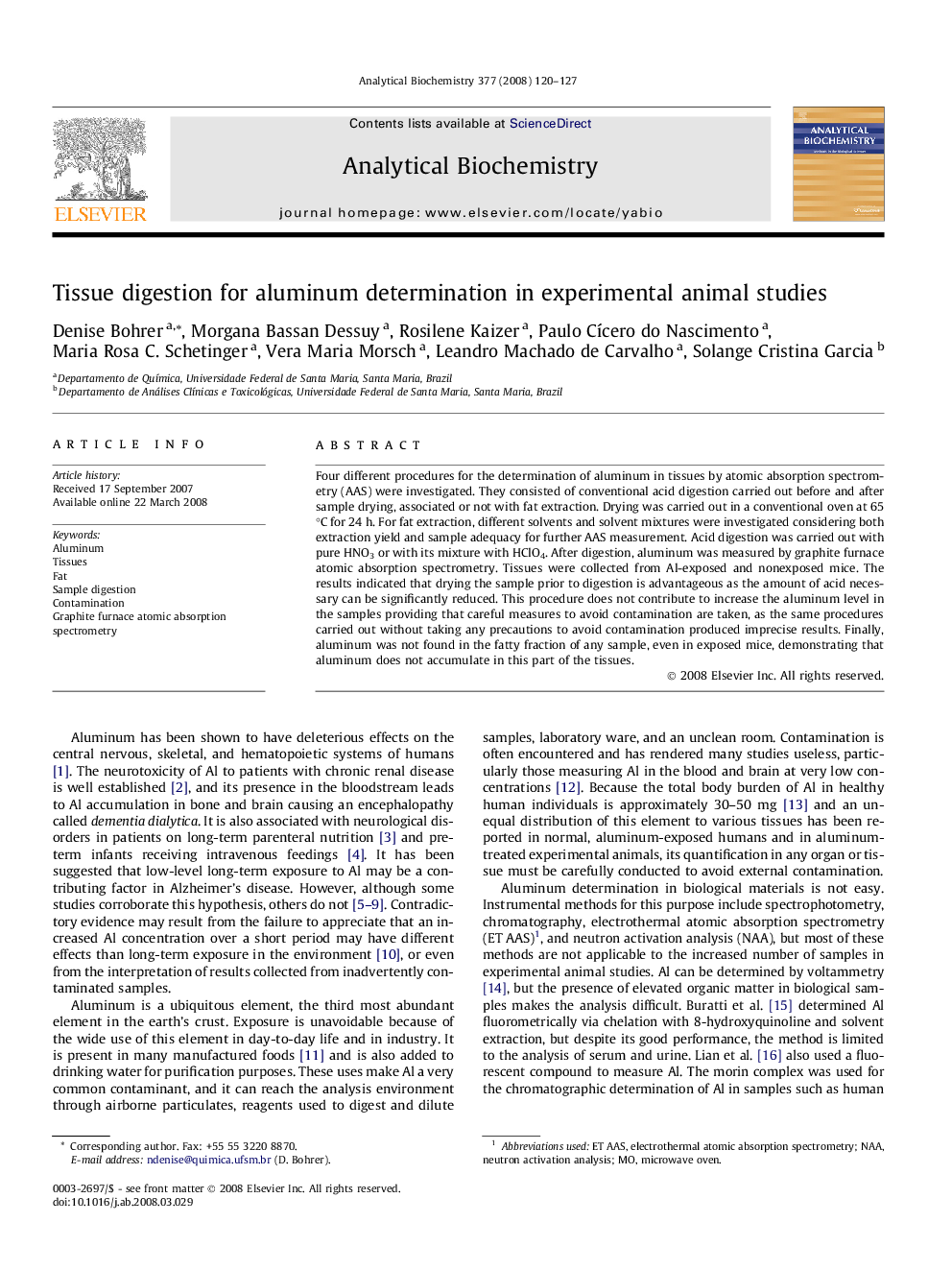| Article ID | Journal | Published Year | Pages | File Type |
|---|---|---|---|---|
| 1176329 | Analytical Biochemistry | 2008 | 8 Pages |
Four different procedures for the determination of aluminum in tissues by atomic absorption spectrometry (AAS) were investigated. They consisted of conventional acid digestion carried out before and after sample drying, associated or not with fat extraction. Drying was carried out in a conventional oven at 65 °C for 24 h. For fat extraction, different solvents and solvent mixtures were investigated considering both extraction yield and sample adequacy for further AAS measurement. Acid digestion was carried out with pure HNO3 or with its mixture with HClO4. After digestion, aluminum was measured by graphite furnace atomic absorption spectrometry. Tissues were collected from Al-exposed and nonexposed mice. The results indicated that drying the sample prior to digestion is advantageous as the amount of acid necessary can be significantly reduced. This procedure does not contribute to increase the aluminum level in the samples providing that careful measures to avoid contamination are taken, as the same procedures carried out without taking any precautions to avoid contamination produced imprecise results. Finally, aluminum was not found in the fatty fraction of any sample, even in exposed mice, demonstrating that aluminum does not accumulate in this part of the tissues.
